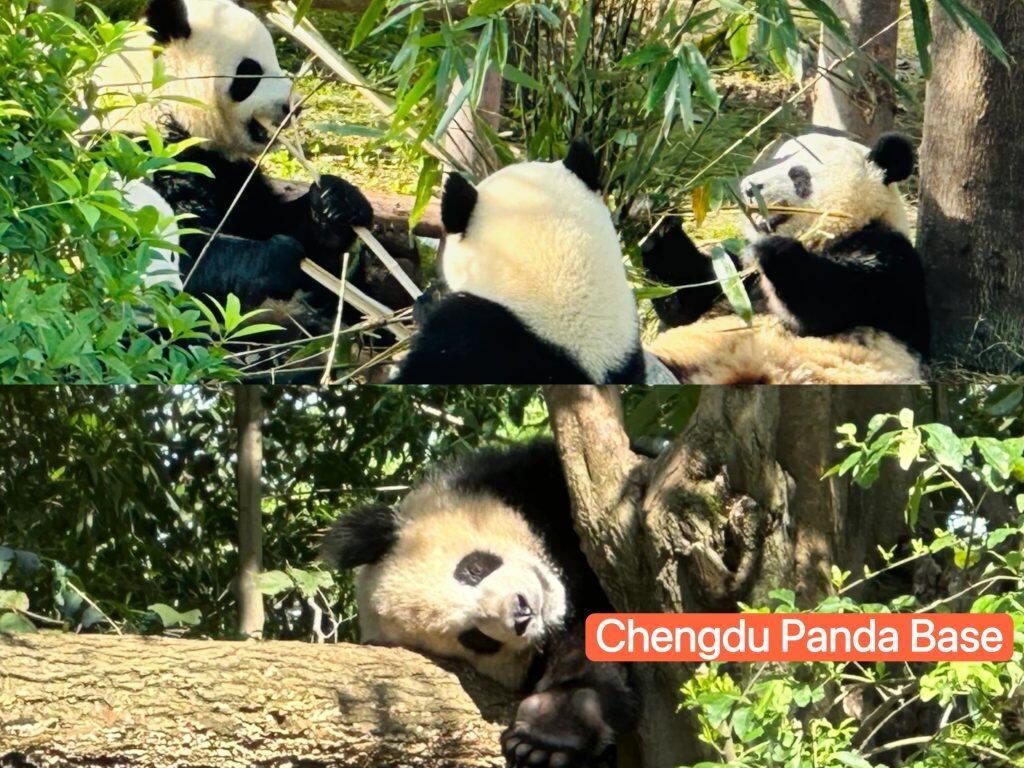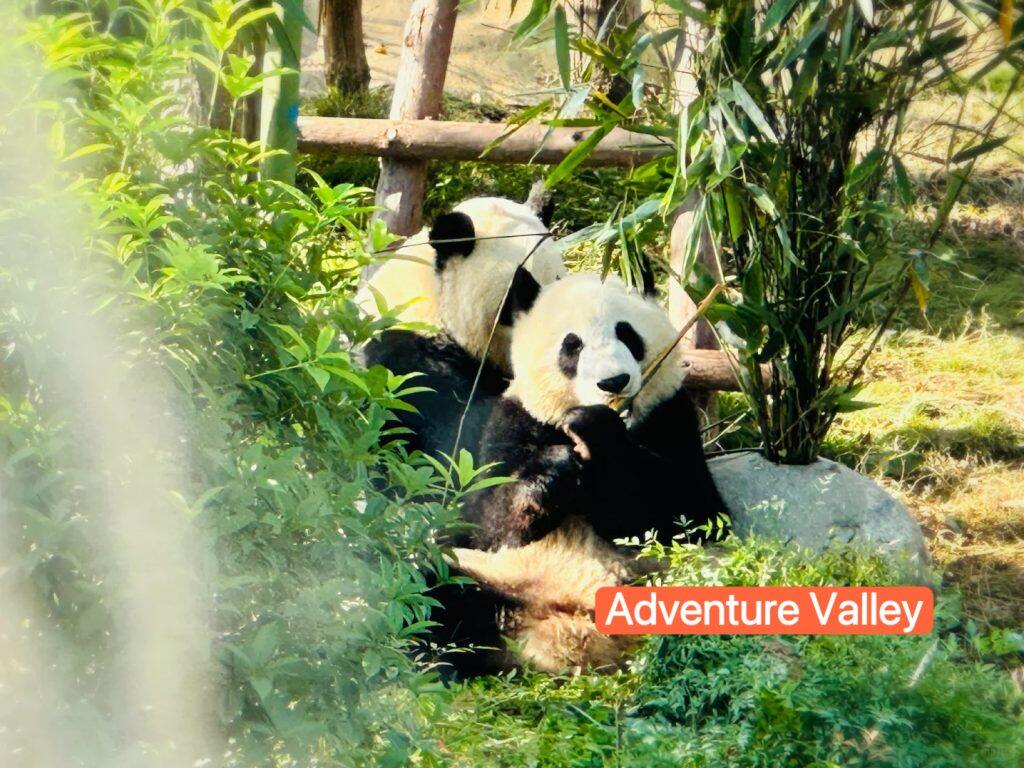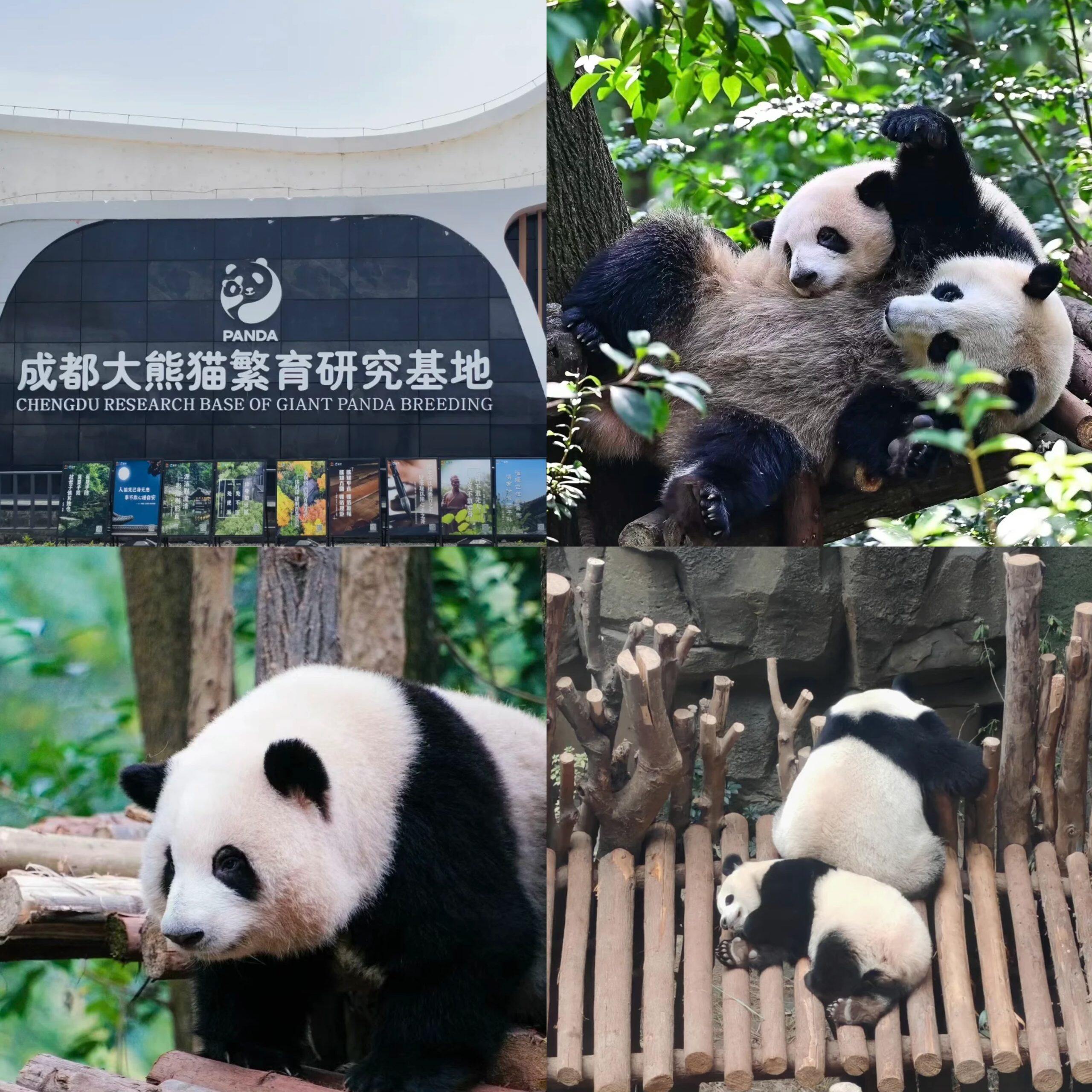Hello, I’m Mike Wang, a China travel expert with over 20 years of experience. During these two decades, I’ve traveled extensively around the world. Today, we explore one of China’s most beloved natural attractions—the Chengdu Panda Base. This conservation haven offers a unique blend of lush bamboo forests, adorable giant pandas, and meaningful encounters with wildlife—a perfect mix of nature, education, and fun.
Introduction
Chengdu Panda Base, founded in 1987, covers over 1,500 acres (about 607 hectares) in Chenghua District, Chengdu—just 10 kilometers from the city center in China. It’s one of the world’s most famous places for giant panda conservation and a top must-visit in Sichuan.
Originally built to protect and breed giant pandas (a national treasure in China), the base started with just 6 pandas. After over 30 years of effort, it has successfully bred hundreds of pandas and become a key center for panda research.
Today, the base mimics pandas’ wild habitats with lush bamboo forests, gentle hills, and clean ponds. You can see pandas of all ages—cubs playing in nurseries, adults munching bamboo, and sub-adults climbing trees. It also has a panda museum that tells the story of panda conservation, making it not just a zoo but a place to learn about these cute creatures.

Tickets & Opening Hours
- Tickets:
- Adult: 55 RMB (~$7.5) from April to October; 30 RMB (~$4) from November to March.
- Free: Kids under 1.3m or 6 years old; Seniors over 60 (with valid ID).
- Half-price: Students (with valid student ID) – 27 RMB (~$3.7).
- Purchase & Payment:
- Online: Book via the official WeChat mini-program “成都大熊猫繁育研究基地” or travel platforms like Ctrip, Fliggy 1 – 7 days in advance. Accepts Alipay, WeChat Pay, and international credit cards (Visa, Mastercard).
- On-site: At the ticket office, cash, Alipay, WeChat Pay, and international credit cards are also accepted.
- Opening Hours: 7:30 am – 18:00 pm. But it’s better to enter before 12:00 pm if you buy a morning ticket, and after 12:00 pm for an afternoon ticket.
Main Scenic Areas & Attractions
Adventure Valley:
Built to mimic the natural living environment of pandas. It has 7 panda houses named after the moon, like “Moonlight Pavilion” (明月馆). Here, you can see pandas of all ages, from cubs to adults, playing and napping. The layout was designed to let pandas have enough space to move around, just like in the wild in China.

Exploration Forest:
Home to the “Giant Panda Star Maternity Ward”. This is where new panda cubs are born and taken care of. In the past, the base faced challenges in panda breeding, but through years of research, they have successfully increased the number of panda births here. Next to it is the “Star – Han Pavilion” for sub – adult and adult pandas, and the “Panda Art Museum” displaying panda – themed artworks.
Infinite Hills:
The area has 4 panda houses. Some of the pandas here are well – known “returnees” from overseas. They were born in foreign countries as part of international panda cooperation programs and then returned to China. The area was designed to provide a peaceful and natural living space for them, with beautiful views of the surrounding hills.
Giant Panda Museum:
The world’s first interactive panda – themed museum. It has 7 exhibition areas and a 3D cinema. It shows the history of panda research in China, from the initial discovery of pandas to the current advanced breeding techniques. It opened to the public to raise awareness about panda conservation.

Transportation
- 🚇Subway:
- Take Line 3 to “Panda Base” Station (Exit A). Then walk about 10 – 15 minutes to the base entrance.
- 🚌Bus:
- Bus 87, 198, and 198A stop near the base. The fare is usually 2 – 3 RMB (~$0.3 – $0.4). You can pay with cash or use mobile payment on the bus.
- 🚕Taxi/Didi:
- Tell the driver “成都大熊猫繁育研究基地” (Chengdu Research Base of Giant Panda Breeding). From the city center, it costs around 30 – 50 RMB (~$4 – $7), and the journey takes about 30 – 40 minutes, depending on traffic.
- How to Buy Transportation Tickets:
- For subway, buy a single – trip ticket at the station ticket machine (has English options) or use a transit card.
- For bus, pay on board.
Experience & Activities
- Guided Tours (English):
- Book via the official website or on – site at the tour desk. Cost: 150 – 200 RMB (~$20 – $27) per group (up to 5 people). The tour usually lasts 1.5 – 2 hours and covers all the main areas and tells interesting panda stories.
- Panda – Watching Experience:
- No need to book in advance. But if you want to watch pandas in the morning when they are more active, come early. The best time to see pandas eating bamboo and playing is usually from 9:00 am – 11:00 am.
- Panda – Themed Workshops:
- Sometimes, the base holds workshops like making panda – shaped handicrafts. Check the official WeChat account for announcements. You can sign up on – site or through the WeChat mini – program if available.
Practical Tips & Etiquette
- No flash photography when taking pictures of pandas. The light can be harmful to their eyes.
- Don’t throw trash. There are bins everywhere in the base.
- Keep your voice down. Pandas are sensitive to noise.
- Don’t feed the pandas. They have a special diet prepared by the base staff.
- Wear comfortable shoes as you will be walking a lot, around 10,000 – 15,000 steps.
- Bring a hat and sunscreen in summer, and a warm coat in winter as the weather in Chengdu can be changeable.
Accommodation (Within 3km)
Panda Hotel:
1.5km from the base. It has a panda – themed design.
Price: ~600 RMB/~$82 per night (includes breakfast).
Hanting Hotel (Panda Base Branch):
2km away. Modern and clean rooms.
Price: ~400 RMB/~$55 per night.
7 Days Inn (Near Panda Base):
2.5km away. Simple and affordable.
Price: ~280 RMB/~$38.5 per night.
InterContinental Panda City Chengdu:
3km away. Offers great views and high – end facilities.
Price: ~1,500 RMB/~$205 per night.
Food
- Inside the Base:
- There are snack bars selling simple food like noodles (20 – 30 RMB/~$2.7 – $4.1), baozi (10 – 15 RMB/~$1.4 – $2), and bottled drinks (5 – 10 RMB/~$0.7 – $1.4).
- Nearby (Within 1km):
- There are local restaurants serving Sichuan cuisine. Try “Mapo Tofu” (麻婆豆腐), which costs about 30 – 40 RMB/~$4.1 – $5.5, and “Kung Pao Chicken” (宫保鸡丁) for 35 – 45 RMB/~$4.8 – $6.2.
- Street food stalls sell snacks like “Jianbing” (煎饼) for 10 – 12 RMB/~$1.4 – $1.6 and “Cold Noodles” (凉面) for 8 – 10 RMB/~$1.1 – $1.4.

Mike Wang
Mike Wang is a 40-something Chinese travel expert, has explored the world,
hosting numerous foreign visitors. He’s deeply interested in and knowledgeable
about ancient cultural architectures, enriching journeys with his insights.

